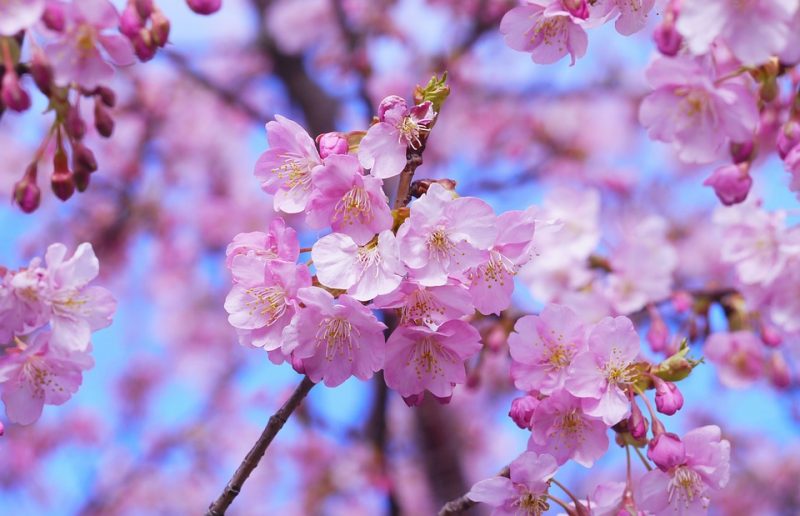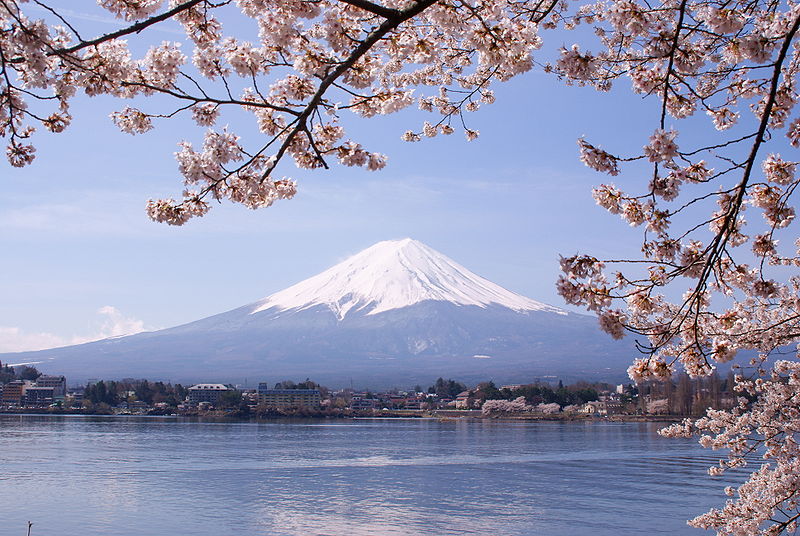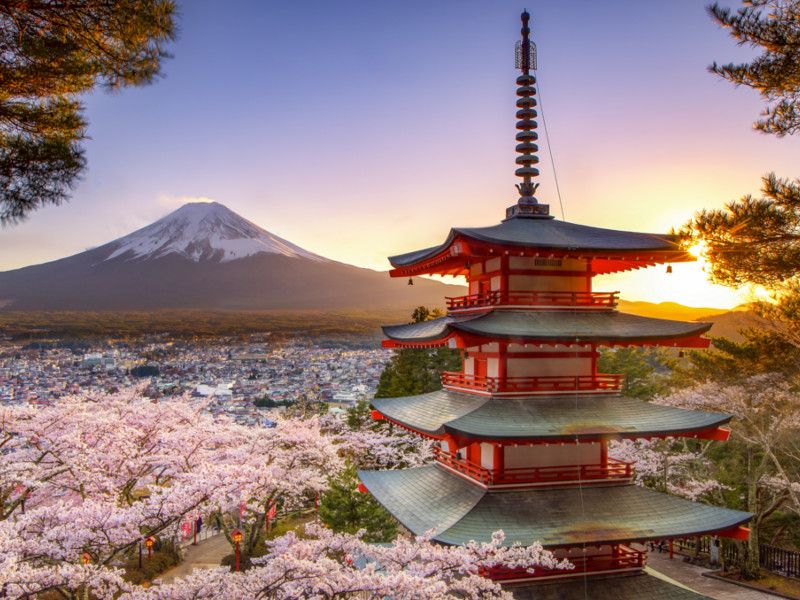What is a pagoda? It is a towerlike, tiered structure traditionally associated with Buddhist temple complexes. Pagodas are common sights throughout eastern and southeast Asia, including Japan. Pagodas are meant to symbolize sacred mountains and often shelter religious relics.
The Chureito Pagoda, also called the Chastain Tower and officially named the Fujiyoshida Cenotaph Monument, is a shrine located in the Fuji Five Lakes region at Mount Fuji’s northern base. The Pagoda has five stories; it is situated on a mountainside overlooking Fuji Yoshida City, with Mount Fuji itself visible in the distance. You have probably seen pictures of a beautiful pagoda with Mount Fuji in the background, this is the Chureito Pagoda.
The Chureito Pagoda was built in 1963, a recent addition to the Arakura Sengen Shrine. It serves specifically as a peace memorial commemorating the citizens of Fujiyoshida who died in wars from the mid-1800s until World War II.
At a higher altitude than the rest of the Shrine, Chureito Pagoda is famous for its steps. How many steps lead from the Shrine to the Pagoda? The answer is a stunning 400; visitors agree that the view from the top is worth the effort.
Table of Contents
A Worthy Day Trip from Tokyo
Whether for its historical significance or natural beauty, the Chureito Pagoda and surrounding area make for an excellent day trip from Tokyo. Get away from the frantic hustle of the city and experience the grand Mount Fuji. During the spring cherry blossom season and the autumn koyo season, the view from the Pagoda becomes even more spectacular.
If traveling from Tokyo, allow yourself a full day for travel and for exploring the area.
How to get to Chureito Pagoda
You can easily reach the Arakura Sengen Shrine area by train or bus, but remember – the climb to the Pagoda must be made on foot. In case of rain or snow, be sure to bring outerwear suitable for the weather.
From Tokyo
The easiest access from Tokyo will take you from Shinjuku to Chureito. Use your Japan Rail Pass to take the JR Chuo Line from Shinjuku Station to Otsuki Station. From there, take the Fujikyuko Line (since it’s operated by Fuji Kyuko, is not covered by the Japan Rail Pass) to Shimoyoshida Station. From there, you have a 20 minutes walk to the Chureito Pagoda. The full traject wil take you about 2 hours and 40 minutes.
Alternatively, you can take a bus to Kawaguchiko Station from Tokyo, Shinjuku, or Shibuya Stations.
From Kawaguchiko
Once you reach Fuji Five Lakes region, you can take the Fujikyu Railway Line to Shimoyoshida Station From Kawaguchiko Station: The JR Pass is not valid on this journey. Alternatively, you can take the Mount Fuji World Heritage Loop Bus, with runs every 90 minutes, to the Chureito Iriguchi bus stop. The Shrine and Pagoda are a short walk from either the station or the bus stop.
From Hakone
To travel from Hakone to Chureito, board the Odakyu Hakone Highway Bus from either Togendai or Sengoku. Travel to Gotemba Station, then take the Fujikyu Bus to Kawaguchiko Station.
Entrances Fees and Opening Hours
The Chureito Pagoda is open 24 hours a day – its grounds are never closed to the public. Parking and admission are free of charge.
Cherry Blossoms at Chureito Pagoda
Cherry blossom or sakura season reaches the Mount Fuji area in mid-April. Just picture it – the red and white segments of the pagoda emerge from a sea of pink blossoms, each segment capped with an ornate green roof. Majestic Mount Fuji’s white peak is visible in the distance. Check out our yearly cherry blossom forecasts for the latest information.

The Best Views of Mount Fuji
Mount Fuji is one of the most memorable symbols of Japan. Each year, photographers flock to the Chureito Pagoda and the surrounding area to capture the mountain’s glory. These “stereotypical” photos of Japan make a welcome addition to a travel album or Instagram pictures.

During the first half of November, visitors can experience views of Mount Fuji while the earth is blanketed in the rich, warm colors of the koyo, or leaf-viewing season. As the grounds are not closed at night, they also offer views of sunrise and sunset.
Mount Fuji and the Chureito Pagoda highlight the ephemeral beauty of Japan’s changing seasons. Spring blossoms, red maple leaves in autumn, or winter snows – no matter when you visit, the view from the Pagoda will not disappoint.
